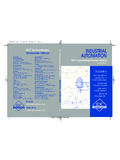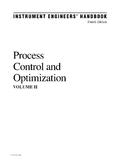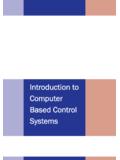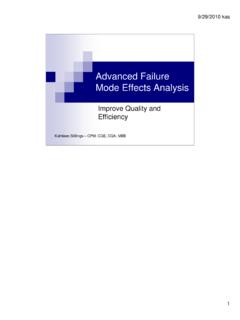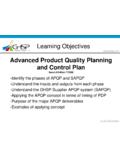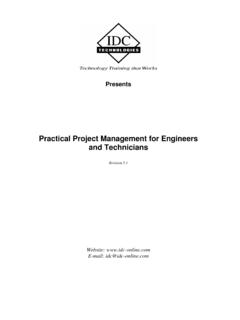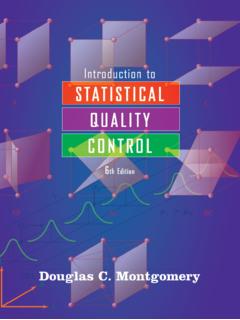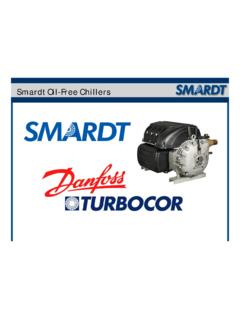Transcription of PID Loop Tuning INTUNE Version 5 Process …
1 DS405-02/05 -- -- 8 -- PID Loop Tuning Pocket Guide, Version 440-443-3900; FAX 440-443-02495387 Avion Park Drive, Highland Heights OH 44143 INTUNE V5 is a plant management and engineering tool thatcombines Process control monitoring functions with powerfuldiagnostic and Tuning tools. The software monitors all plant/ Process loops without intruding on the Process , and canautomatically generate reports that identify poorly performingloops. In its diagnostic capability, INTUNE V5 generates reportsthat will notify managers, engineers, or operators via e-mail,phone call, or alarm, if Process performance violates certain pre-set conditions. INTUNE V5 then provides a tool to resolve processissues quickly and Version 5 Process Performance Monitoring, Reporting, Tuning , & Diagnostic ToolPID Loop TuningPocket GuideVersion of Processes2 Description of PID Units3 Closed Loop Tuning Procedure4-5 Open Loop Tuning Procedure6-7 Reference List ofCommon Controllers8 INTUNE v5 & MANTRA Descriptions8 ControlSoft Contact InformationMANTRAA dvanced Process Control SystemMANTRA is a state-of-the-art advanced control system.
2 It is a full-blown, configurable control system with more than 90 functionblocks, configurable faceplates, and very easy to use, intuitive,drag-and-drop type of function block programming. Theadvanced control functions in MANTRA include our patentedmodel-based control suite IMC (Internal Model Control), CC(Coordinated Control), and MMC (Modular Multivariable Control).MANTRA allows users to build all necessary logic on top of themultivariable predictive control functions to take care of anyoperation or control needs. It also allows users to switch thecontrol back and forth between MANTRA and their existingcontrol -- -- OF PID UNITSP roportional Term is the amount added to the output based on thecurrent Gain is a the error is 10 and the Gain is .8, then the output will move 8%.Proportional Band is a Divider as a the error is 10 and the Band is 125%, then output is (10*(100/125))=8%.
3 Conversion between P-Gain and P-Band:P-Band = 100/P-GainIntegral Term is the amount added to the output based on the sum of Constant is the time for one full repeat of the P-Term is 8% and the Time Constant is 10 seconds, then the outputwill ramp up 8% every 10 Rate is amount the output will move in one the P-Term is 8% and the Reset Rate is .1 repeat/sec, then the outputwill move .1*8 every second and take 10 seconds for the full repeat ofthe P-Term of 8%.Integral Gain is the same as the Reset Rate multiplied by the between Time and Reset Rate:Reset Rate = 1/ Time ConstantI-Gain = (1/Time Constant)*P-GainDerivative Term is the amount subtracted from the output based on therate of change of the Constant is the amount of time the controller will look Gain is the amount of time the controller looks forwardmultiplied by the OF PROCESSESPage 2 -- PID Loop Tuning Pocket Guide, Version Loop Tuning Pocket Guide, Version -- Page 7 Fast Loops (flow, pressure)P - Little [Too much will causecycling]I - MoreD - Not neededSlow Loops (temperature)P - MoreI - Some [Too much will causecycling]D - SomeIntegrating (level & insulated temp)P - MoreI - Little [Will cause cycling]D- Must [If D is not used, the loop willcycle.]
4 ]Noisy Loops (any PID loop where themeasurement is constantly changing)P - Low [Will cause cycling]I - Most [Accumulated error]D - Off [Will cause cycling]GE PID BLOCKSS eries 90/30/70 PID Block ISAP Gain (Gain * 100)I Reset Rate (Repeats/sec * 1000)D Time Constant (Sec * 100)Series 90/30/70 PID Block IndependentP Gain (Gain * 100)I Reset Rate (Repeats/sec * 1000)D Gain (Gain * 100)MANTRA PID BLOCKSPID Block SeriesP Gain (Gain * 1)I Time Constant (Sec * 1)D Time Constant (Sec * 1)PID Block ParallelP Gain (Gain * 1)I Reset Rate (Repeats/sec * 1)D Gain (Gain * 1)PID Block Non-InteractingP Gain (Gain * 1)I Time Constant (Sec * 1)D Time Constant (Sec * 1)MODICON PID BLOCKSKPID BlockP Gain (Gain * 1)I Time Constant (Sec * 1)D Time Constant (Sec * 1)PID BlockP Gain (Gain * 1)I Time Constant (Sec * 1)D Time Constant (Sec * 1)PID2 BlockP Band (Band * 1)I Reset Rate (Repeats/min * 100)D Time Constant (Min * 100)OMRON PID BLOCKSPID BlockP Gain (Gain * 1)I Time Constant (Sec * 10)D Time Constant (Sec * 10)SIEMENS PID BLOCKSTI PID BlockP Gain (Gain * 1)I Time Constant (Min * 1)D Time Constant (Min * 1)S7 controller C non-interactingP Gain (Gain * 1)I Time Constant (Sec * 1)D Time Constant (Sec * 1)SQUARE D PID BLOCKSPID BlockP Gain (Gain * 100)I Reset Rate (Repeats/min * 100)D Time Constant (Min * 6000)WESTINGHOUSE PID BLOCKSWFDP PID BlockP Gain (Gain * 100)I Time Constant (Sec * 1)D Gain (Gain * 1)Ovation PID BlockP Gain (Gain *1)I Time Constant (Sec *1)D Gain (Gain *1)DS405-02/05 -- -- is a summary of many of the more common controllers availableon the market.
5 For units of other controllers, please contact ControlSoft(see page 8 for contact information).AB PID BLOCKSPLC5 Integer Block ISAP Gain (Gain * 100)I Time Constant (Min * 100)D Time Constant (Min * 100)PLC5 Integer Block Independent GainsP Gain (Gain * 100)I Reset Rate (Repeats/sec * 1000)D Gain (Gain * 100)PLC5 PD Block ISAP (Gain *1)I Time Constant (Min * 1)D Time Constant (Min * 1)PLC5 PD Block Independent GainsP Gain (Gain * 1)I Reset Rate (Repeats/sec * 1)D Gain (Gain * 1)PLC5 PCO Block Dependent GainsP Gain (Gain * 1)I Time Constant (Min * 1)D Time Constant (Min * 1)PLC5 PCO Block Independent GainsP Gain (Gain * 1)I Reset Rate (Repeats/sec * 1)D Gain (Gain * 1)SLC PID Block with RG bit onP Gain (Gain *100)I Time Constant (Min * 100)D Time Constant (Min * 100)SLC PID Block with RG bit offP Gain (Gain *10)I Time Constant (Min * 10)D Time Constant (Min * 100)
6 ControlLogix PID Block IndependentP Gain (Gain * 1)I Time Constant (Min * 1)D Time Constant (Min * 1)ControlLogix PID Block DependentP Gain (Gain * 100)I Reset Rate (Repeats/sec * 1)D Gain (Gain * 1)ControlLogix PIDE Block IndependentP Gain (Gain * 1)I Time Constant (Min * 1)D Time Constant (Min * 1)ControlLogix PIDE Block DependentP Gain (Gain * 100)I Reset Rate (Repeats/sec * 1)D Gain (Gain * 1)BAILEY INFI90 PID BLOCKS156,0 PID BlockP Gain (Gain *1)I Reset Rate (Repeats/min * 1)D Time Constant (Min * 1)156,1 PID BlockP Gain (Gain * 1)I Reset Rate (Repeats/min * 1)D Time Constant (Min * 1)156,2 PID BlockP Gain (Gain * 1)I Reset Rate (Repeats/min * 1)D Time Constant (Min * 1)156,3 PID BlockP Gain (Gain * 1)I Time Constant (Min * 1)D Time Constant (Min * 1)FOXBORO PID BLOCKSI/A Series PID, PIDA, PIDE, PIDX, PIDXEP Band (Band * 1)I Time Constant (Min * 1)D Time Constant (Min * 1)CLOSED LOOP Tuning PROCEDURECLOSED LOOP STEP 1: KNOW THE PROCESSI dentify the loop you intend to tune and determine the speed of the loop.
7 A roughcategorization is as follows:Fast loop has response time from less than one second to about 10 seconds,such as a flow loop. Use of PI controller is loop has response time of several seconds up to about 30 seconds, suchas flow, temperature, and pressure. Use either PI or PID controllerSlow loop has response time of more than 30 seconds, such as manytemperature loops and level loops. Use of PID controller is LOOP STEP 2: KNOW THE CONTROLLERI dentify the units of your PID controller,Proportional term (P-Term) is either a Proportional Gain (P-Gain) or ProportionalBand (P-Band).Integral term (I-Term) can be a Time Constant (in minutes or seconds), Reset Rate(1/second or 1/minute), or I-Gain (Reset rate * Proportional gain).Derivative term (D-Term) can be Time Constant (in seconds or minutes) orDerivative Gain (derivative time constant * proportional gain).
8 In this document, Proportional Gain, Integral Reset Rate, and Derivative Gain back to your controller units if Reference section is a summary of many of the more common controllersavailable on the units of other controllers, please contact LOOP STEP 3: WATCH THE RESPONSEMake a small change of setpoint (say 5%) or wait for a disturbance in theprocess. Then watch for Process variable (PV) and control output (CO)responses. If no visible instantaneous change of CO upon the change of setpoint or noapparent overshoot (over damped), increase your proportional gain by 50%. If the PV is unstable or has sustained oscillation, with overshoot greater than25%, reduce Proportional Gain by 50% and reduce Integral Reset Rate by50%. If PV oscillation persists with tolerable overshoot, reduce Proportional Gain by20% and reduce Integral Reset Rate by 50%.
9 If 3 or more consecutive peaks occur upon the change of setpoint, reduceIntegral Reset Rate by 30% and increase Derivative Gain by 50%. If PV stays fairly flat and below (or above) the setpoint for a long time, afterchange of setpoint or beginning of disturbance (long tail scenario), increaseIntegral Reset Rate by 100%. Repeat step 3 until the closed-loop response is satisfactory to 6 -- PID Loop Tuning Pocket Guide, Version Loop Tuning Pocket Guide, Version -- Page 3DS405-02/05 -- -- LOOP STEP 1:KNOW THE PROCESSI dentify the loop you intend to tune and determine the speedof the loop. A rough categorization is as follows: Fast loop has response time from less than one second toabout 10 seconds, such as a flow loop. Use of PIcontroller is loop has response time of several seconds up toabout 30 seconds, such as flow, temperature, andpressure.
10 Use either PI or PID controllerSlow loop has response time of more than 30 seconds,such as many temperature loops and level loops. Useof PID controller is LOOP STEP 2:KNOW THE CONTROLLERI dentify the units of your PID controller,Proportional term (P-Term) is either a Proportional Gain (P-Gain) or Proportional Band (P-Band).Integral term (I-Term) can be a Time Constant (in minutesor seconds), Reset Rate (1/second or 1/minute), or I-Gain (Reset rate * Proportional gain).Derivative term (D-Term) can be Time Constant (inseconds or minutes) or Derivative Gain (derivativetime constant * proportional gain).In this document, Proportional Gain, Integral Time Constant(in seconds), and Derivative Time Constant (inseconds) are back to your controller units if Reference section (starting on page 6) is a summaryof many of the more common controllers available onthe units of other controllers, please contact LOOP Tuning PROCEDUREPage 4 -- PID Loop Tuning Pocket Guide, Version Loop Tuning Pocket Guide, Version -- Page 5 OPEN LOOP STEP 3:OPEN LOOP TEST FOR NON-INTEGRATING LOOPSC ontroller Output (CO) Process Input Time Time CO Change Process Value (PV) Process Output Noise Band PV Change Deadtime 63% of PV Change Time Constant Gain = PV_Change / CO_Change Figure OrderNon-IntegratingModelCalculationa.
